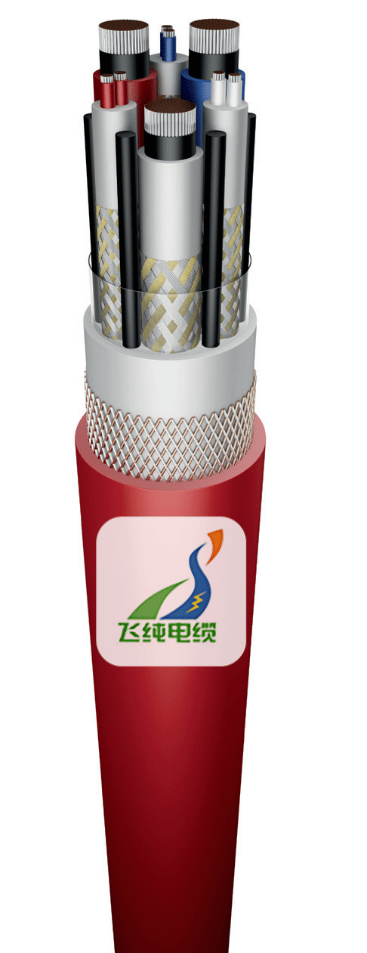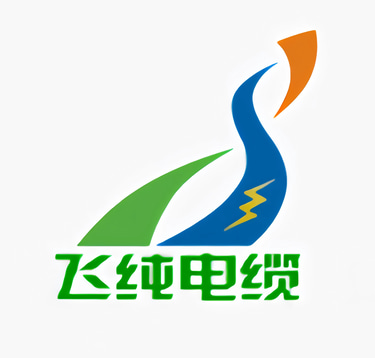Type OnGcekż/w-GW, O2nGcekż/w-GW 3.6/6 kV
4-, 7-, and 10-core mining cables with two screens for a rated voltage of 3.6/6 kV


1. Overview and Standard
Application:
These cables are designed for underground mining applications, particularly to supply power to mobile equipment.Voltage Rating:
They are built for a nominal voltage of 3.6/6 kV.Construction Types:
Available in 4-, 7-, and 10-core versions, each featuring two screening layers for enhanced protection.Standard Compliance:
Manufactured in accordance with the Polish standard ZN-KFK-011:1999.
2. Construction and Materials
Conductors (Working & Auxiliary):
Made of multi-stranded, galvanized copper wires (class 5 as per PN-EN 60228).
The protective (or earth) conductor is created by interconnecting the screens of both working and auxiliary conductors.
Separator:
A non-hygroscopic separator—typically a polyester film or similar material—is placed between the working conductors.
Insulation:
All conductors are insulated with type IEP (ethylene-propylene) rubber following PN89/E-29100.
Thickness:
Working conductors: 3.4 mm
Auxiliary conductors: 1 mm
Color Coding:
Working conductors: available in natural, red, or blue.
Auxiliary conductors: provided in two natural, two red, and two blue variants.
Screening System:
Individual Conductor Screen:
Each conductor is wrapped in a metallic braid made from galvanized copper wires combined with plastic yarn.
This braid is applied directly onto a non-metallic, conductive tape.
Overall (General) Screen:
An additional metallic braid, also of galvanized copper wires, is applied over a non-metallic screen.
Its design ensures a minimum copper cross-sectional area of 6 mm².
Additional Components:
Separators & Inserts:
Components such as a three-armed separator made from conductive rubber (type P), vulcanized rubber inserts, and an inner rubber sheath (ON5) are used for structure and stability.
Outer Sheath (“Opona”):
Made of flame-retardant, oil-resistant rubber.
The variant marked with “O2n” has a two-layer construction reinforced with a plastic braid.
3. Explanation of Cable Marking
The designation (e.g., OnGcekż/w-GW or O2nGcekż/w-GW) can be broken down into its components:
O₂n / On:
Indicates the type of outer sheath. “O2n” means a two-layer outer sheath with a reinforcing plastic braid, while “On” refers to a single-layer flame-retardant rubber sheath.
Gc:
Refers to the insulated copper conductors (with ethylene-propylene rubber insulation).
ekż:
Means that each conductor is individually shielded with a braid made of galvanized copper wires.
w:
Denotes the presence of an overall (general) metallic screen made of galvanized copper wires.
G:
Indicates that the cable is specifically designed for mining applications.
GW:
Implies that the cable features longitudinal sealing (for additional protection, such as against moisture).
Example:
A cable marked as “OnGcekż/w-GW 4-żyłowy” is a 4-core mining cable rated for 3.6/6 kV, with working conductors of 70 mm² and a protective conductor of 25 mm².
4. Internal Structure (Core Configurations)
4-Core Cables:
Contain three insulated and screened working conductors.
The protective conductor is formed by three uninsulated screens (from the working conductors) arranged in grooves between them and twisted around a filler.
7-Core Cables:
Have three insulated and screened working conductors twisted around a central separator.
Include an assembly of auxiliary and protective conductors placed in the grooves between the working conductors. This assembly typically comprises a rubber insert, an auxiliary conductor (as a wrap or braid), its insulation, and a protective conductor (again as a wrap or braid).
10-Core Cables:
Feature three insulated and screened working conductors (twisted on a central separator).
Their auxiliary/protective system is more complex—formed by a pair of twisted insulated conductors, overlaid with an additional layer, a conductive tape braid, and an outer metallic braid placed in the grooves.
5. Electrical and Mechanical Characteristics
Test (Withstand) Voltages:
Working Conductors:
11 kV for AC tests
26.4 kV for DC tests
Auxiliary Conductors:
2 kV for AC tests
4.8 kV for DC tests
Mechanical Durability:
Excellent resistance to impacts, abrasion, and tearing.
The outer sheath is resistant to flame spread and oils.
Temperature Ranges:
Ambient: −30°C to +50°C
Maximum Operating Temperature: +90°C
Bending Radius:
The minimum recommended bending radius is specified as either 4 times the cable diameter (4D) or 2.5D, depending on the design.
Packaging:
Typically supplied on reels, with a standard length of 250 meters.
6. Technical Data (Summary of Tables)
The documentation also includes detailed tables specifying various parameters for different cable configurations, such as:
Conductor Details:
Nominal cross-sectional areas for working, auxiliary, and protective conductors.
Conductor diameters and insulation thickness.
Current Ratings:
Continuous (long-term) current-carrying capacity.
Short-circuit current-carrying capacity.
Earth Fault Characteristics:
Unit earth capacitance and earth short-circuit current values.
Inductive Parameters:
Unit inductance and the reactance of the working conductors.
These tables help in selecting the appropriate cable type based on specific application needs and ensure that the cable’s electrical and mechanical performance meets the rigorous demands of underground mining environments.

Frequently Asked Questions (FAQ)
Q: What is the nominal voltage rating of these cables?
A: They are designed for a nominal voltage of 3.6/6 kV.
Q: What mining applications are these cables best suited for?
A: These cables are engineered for underground mining environments, powering mobile equipment and fixed installations where robust electrical performance and high mechanical durability are essential.
Q: What core configurations are available?
A: The cables come in 4-core, 7-core, and 10-core configurations, allowing for flexibility based on the installation’s power requirements.
Q: How are the cable conductors constructed?
A: The conductors are made of multi-stranded, galvanized copper (class 5 according to PN-EN 60228) and include both working and auxiliary elements. The protective (earth) conductor is formed by connecting the screens of the working and auxiliary conductors.
Q: What type of insulation is used in these cables?
A: They use ethylene-propylene (IEP) rubber for insulation. Working conductors have a 3.4 mm thick insulation, while auxiliary conductors are insulated with a 1 mm thick layer. The insulation is color-coded (natural, red, or blue) for the working conductors.
Q: What does the marking “OnGcekż/w-GW” indicate?
A: The marking breaks down as follows:On: A flame-retardant, oil-resistant rubber outer sheath.
Gcekż: Individually screened copper conductors.
w: An overall metallic screen.
GW: Incorporates longitudinal sealing for enhanced protection.
This indicates a cable specifically designed for the rigors of mining operations.
Q: Which standard do these cables comply with?
A: They are manufactured in accordance with the Polish standard ZN-KFK-011:1999, ensuring reliability and performance in mining applications.Q: How do the dual screening systems improve cable performance?
A: Each conductor is individually shielded, and an overall metallic screen is added, which provides robust protection against electrical interference and mechanical damage in harsh mining environments.Q: What are the operating temperature ranges for these cables?
A: They are designed to function in ambient temperatures from –30°C to +50°C, with a maximum operating temperature of +90°C, making them suitable for various underground conditions.Q: What mechanical durability features do these cables offer?
A: The cables exhibit excellent resistance to impacts, abrasion, and tearing, and the outer sheath is designed to resist flame spread and exposure to oils, which is critical in the dynamic and sometimes harsh conditions of mining.Q: How are these cables typically packaged for installation?
A: They are supplied on reels, with a standard length of 250 meters, facilitating easy transport and installation in mine environments.Q: What electrical testing standards do these cables meet?
A:Working Conductors: Tested at 11 kV AC and 26.4 kV DC.
Auxiliary Conductors: Tested at 2 kV AC and 4.8 kV DC.
These testing parameters help ensure the cables can withstand the electrical stresses encountered in mining operations.






Type OnGcekż/w-GW, O2nGcekż/w-GW 3.6/6 kV
The OnGcekż/w-GW and O2nGcekż/w-GW cables are purpose-built for the demanding conditions found in underground mining environments. Rated at 3.6/6 kV, they are available in various configurations—typically 4-core, 7-core, or 10-core—designed to meet different power distribution needs in mining operations. These cables feature multi-stranded, galvanized copper conductors (meeting class 5 of PN-EN 60228) for both working and auxiliary circuits, with the protective conductor formed by interconnecting the individual screens. Each working conductor is insulated with a robust 3.4 mm thick layer of ethylene-propylene rubber (IEP), while the auxiliary conductors use a 1 mm thick insulation. The insulation is color-coded (natural, red, or blue) to clearly distinguish between circuits. A dual screening system enhances the cable’s performance: every conductor is individually wrapped in a metallic braid of galvanized copper combined with plastic yarn, and an overall metallic screen further protects against electrical interference. Additional components like non-hygroscopic separators, vulcanized rubber inserts, and specially designed flame-resistant, oil-resistant outer sheaths (with the O2n variant featuring a reinforced two-layer construction) contribute to the cable's durability and safety. Manufactured according to the Polish standard ZN-KFK-011:1999, these cables are rigorously tested (withstand tests of up to 11 kV AC and 26.4 kV DC for working conductors) to ensure reliable performance. They are engineered to withstand mechanical stresses such as impacts, abrasion, and tearing, and are capable of operating in ambient temperatures ranging from –30°C to +50°C, with a maximum operating temperature of +90°C. Overall, the design and construction of these cables make them an ideal choice for powering mobile equipment and fixed installations in the harsh conditions of underground mines.
6/30/20215 min read
